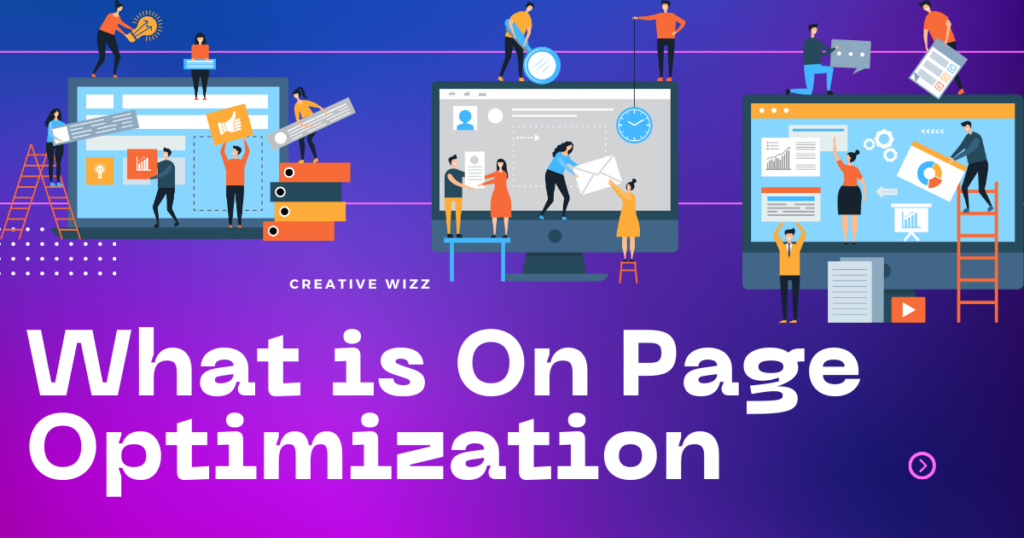A website’s back-end refers to the behind-the-scenes server-side code and infrastructure that power the full functionality, data integration, business logic, and core performance. While front-end code creates the interface, robust back-end development builds a scalable foundation supporting complex websites and web applications.
In this comprehensive guide, we’ll cover what high-quality back-end development entails, key technologies used, services provided by back-end pros, and how to select the right partner for your next web project. Let’s get started!
What is Back-End Web Development?
Back-end web development focuses on coding server-side logic and integrating backend systems. This involves:
Server-side programming – Code running on web servers like Node.js, PHP, Python, Ruby, Java, C#/.NET.
Databases – Storing and managing site data in SQL NoSQL databases like MySQL, MongoDB, etc.
APIs – Interfaces enabling data integration with third-party services.
DevOps – Managing servers, deployment pipelines, and monitoring.
Security – Data protection, access controls, encryption.
Performance – Caching, compression, database optimization.
While front-end code executes on the user’s browser, back-end code runs on servers to provide full functionality.
Demystifying the Backbone: Unveiling the Power of Back-End Web Development Services
In the vibrant landscape of web development, web development services encompass a vast array of offerings. But what truly breathes life into the websites and applications we interact with daily? That’s where back-end development steps in, acting as the unseen yet potent force powering their functionality and data management.
While web programming services, like WordPress development or custom development, often focus on the user interface and front-end experience, back-end development delves deeper. It’s the intricate network of code and systems that orchestrate the magic behind the scenes, ensuring seamless data processing, secure interactions, and robust performance.
Think of it this way: imagine a beautiful storefront with enticing displays. But with a well-stocked inventory, efficient payment processing, and smooth logistics, that storefront would function effectively. That’s precisely what back-end development accomplishes for your digital presence.
So, what exactly is back-end development? In essence, it’s the art and science of crafting the server-side infrastructure that powers websites and applications. It involves:
- Database management: Storing, organizing, and retrieving data efficiently to fuel your platform’s functionality.
- Server-side logic: Writing code that processes user actions, interacts with databases, and delivers dynamic content.
- API development: Building interfaces that enable seamless communication between different parts of your application or with external services.
- Security: Implementing robust measures to protect your data, user information, and system integrity.
- Performance optimization: Ensuring your website or application loads quickly and functions smoothly under heavy traffic.
At Creative Wizz, we understand the critical role back-end development plays in driving successful digital solutions. We wield a diverse arsenal of combat-proven back-end development technologies, including:
- Programming languages: Python, Java, PHP, .NET, Node.js (and more!), chosen based on the specific needs of your project.
- Databases: MySQL, PostgreSQL, MongoDB, Redis, catering to various data storage and retrieval requirements.
- Cloud platforms: AWS, Azure, and Google Cloud, leveraging their scalability and agility.
- API frameworks: Restful APIs, GraphQL, enabling efficient data exchange with other applications.
- Security frameworks: Implementing industry-standard security practices to safeguard your data and user information.
By harnessing these technologies and our vast experience, we offer a plethora of benefits through our back-end development services:
- Enhanced Scalability: We build solutions that can adapt and grow seamlessly as your user base or data volume increases.
- Improved Performance: Our optimized code and architecture ensure fast loading times and a smooth user experience.
- Robust Security: We prioritize data protection and implement comprehensive security measures to keep your information safe.
- Greater Flexibility: We build adaptable back-ends that can integrate with various technologies and services.
- Future-Proof Solutions: We leverage cutting-edge technologies and best practices to ensure your back end is prepared for tomorrow.
But our approach goes beyond mere technology. We adhere to rigorous back-end development best practices, including:
- Clean and maintainable code: We write code that is easy to understand, modify, and extend, ensuring long-term sustainability.
- Agile methodology: We work in iterative sprints, allowing for continuous feedback and adaptation to your evolving needs.
- Thorough testing: We rigorously test our code across various scenarios to ensure functionality and identify potential issues.
- Clear communication: We keep you informed throughout the development process and actively solicit your feedback.
Our process can be summarized in five key steps:
- Discovery and Planning: We delve into your project goals, target audience, and technical requirements.
- Architecture Design: We design a scalable and secure back-end architecture tailored to your specific needs.
- Development and Testing: Our skilled developers meticulously craft the back-end, implementing rigorous testing throughout.
- Deployment and Support: We seamlessly deploy your back end and offer ongoing support and maintenance.
- Continuous Improvement: We monitor your back-end performance and continuously optimize it for even better results.
We understand that every project is unique, and we offer scalable back-end solutions that adapt to your specific vision. Whether you need a simple website or a complex enterprise application, we have the expertise and resources to deliver exceptional results.
Furthermore, we recognize the crucial role of back-end API development in today’s interconnected world. Our back-end API development services empower you to seamlessly connect your application with other platforms and services, unlocking new possibilities for data exchange and functionality.
Why Hire Back-End Development Services?
While simple static websites require only front-end code, dynamic, data-driven sites need robust back-ends. Benefits of back-end experts include:
Custom business logic – Complex server-side logic unique to your application needs.
Scalability – Growing site traffic and data without slowdowns.
Database integration – Managing data securely and efficiently at scale.
Advanced capabilities – Functionality like user accounts, notifications, and administrative dashboards.
API integrations – Connecting 3rd party services like payment gateways, CRMs, and analytics.
Security – Protecting sensitive user data and preventing cyber threats.
Performance optimization – Efficient queries, caching layers, and compression to speed up sites.
In short, back-end development provides a bulletproof foundation for complex sites and web apps.
Professional Back-End Development Services
Here are common back-end-focused services offered by development teams:
Custom Programming
I am coding server-side logic tailored to unique project requirements. Languages like Node.js, PHP, Python, Java, and C# and frameworks like Django, Rails, Laravel, Spring, and .NET Core enable endless possibilities.
API Development
We are building custom JSON/XML APIs for connecting front-end experiences to back-end data and business processes. Enables reuse across platforms.
Database Development
Modelling, implementing, managing, querying, and optimizing SQL and NoSQL databases for your application’s data storage needs.
DevOps Engineering
Managing Linux web servers, CI/CD deployments, monitoring, logging, troubleshooting, autoscaling, security hardening and application infrastructure.
Support & Maintenance
Continued back-end support addressing issues, enhancing based on new requirements, and evolving platforms to take advantage of advancing technologies.
Legacy Modernization
Re-architecting outdated legacy back-ends with cloud-based, scalable, secure modern solutions.
Finding an agency or freelancers skilled in these areas ensures robust back-end foundations scaled to your website or application requirements.
Key Back-End Languages, Frameworks & Tools
Common technologies powering back-end solutions include:
Server-Side Languages – Node.js, PHP, Python, Ruby, Java, C#
Frameworks – Express (Node), Laravel (PHP), Django/Flask (Python), Rails (Ruby), Spring (Java), .NET Core (C#)
SQL Databases – MySQL, PostgreSQL, MariaDB, Microsoft SQL Server
NoSQL Databases – MongoDB, CouchDB, DynamoDB, Redis, Cassandra
ORM Libraries – Sequelize, Mongoose, SQLAlchemy
Web Servers – Nginx, Apache, IIS
Containers – Docker, Kubernetes (K8s)
Infrastructure – Cloud platforms like AWS, Azure, GCP
Monitoring – New Relic, Datadog, Prometheus
Logging – ELK stack (Elasticsearch, Logstash, Kibana)
CI/CD Pipelines – Jenkins, CircleCI, GitHub Actions
Specialized back-end teams work across this technology spectrum to build and deploy robust solutions scaled to demanding workloads.
Deep Dive into Creative Wizz’s Back-End Development Offerings
Back-End Development Services We Provide:
- Custom Back-End Development: We tailor-build back-ends from scratch, ensuring they perfectly align with your unique project requirements and business logic.
- E-commerce Back-End Development: Streamline your online store’s functionality with secure payment processing, inventory management, and order fulfillment systems.
- Content Management System (CMS) Integration: Leverage the power of popular CMS platforms like WordPress or Drupal with custom back-end development to extend their capabilities and tailor them to your specific content needs.
- Real-Time Application Development: Build dynamic and engaging applications with real-time data updates and interactions powered by technologies like WebSockets and server-sent events.
- Microservices Architecture: Break down complex applications into smaller, independent services for greater scalability, maintainability, and development agility.
- Legacy System Integration: Breathe new life into your existing systems by seamlessly integrating them with modern back-end solutions.
- Data Analytics and Reporting: Gain valuable insights into your website or application usage through robust data analytics and reporting dashboards powered by your back-end.
- DevOps Automation: Streamline your development and deployment processes with automated continuous integration and continuous delivery (CI/CD) practices.
how to Choose a Great Back-End Development Partner
Not all back-end developers are created equal. Here are the top factors to evaluate:
Technical Expertise
Look for demonstrated experience mastering the platforms, languages, frameworks, databases, infrastructure, APIs, and DevOps tools needed for your project.
Scalable Architectures
Assess their ability to design flexible, high-performance, and secure back-end solutions built for scale.
Code Quality
Code is organized, commented, documented, and formatted using industry best practices for maintainability.
Security Mindset
End-to-end data protection, infrastructure hardening, and encryption should be top priorities.
Communication Skills
Requirements gathering, progress updates, launch plans and post-launch support require clear collaboration.
Budget Fit
Find back-end specialists aligned with your budget parameters through quotes and rate comparisons.
Partnership Approach
The best teams become trusted extensions of your staff through shared goals.
Vetting back-end talent on these fronts ensures you find the right long-term technology partners for your vision.
Back-End Development Best Practices
Seasoned back-end professionals design and build solutions following proven patterns and standards:
Robust Infrastructure
We are deploying redundant, auto-scaling server and database architectures on secure, managed cloud platforms.
APIs and Microservices
It is breaking large applications into decoupled services for modular development and maximizing reusability.
Testing and Validation
Unit testing code. Load testing at scale. Security audits to identify vulnerabilities.
Access Control
Granular user roles, permissions, and authentication are used to protect data access.
Documentation
Detailed technical specifications, API documentation, infrastructure diagrams, and READMEs in code repositories.
Code Reuse
We are centralizing shared logic in libraries, SDKs, and APIs used across projects.
Monitoring and Alerting
You are tracking performance metrics and system logs for preventative maintenance.
Backups and Recovery
Automated database, file storage, and server backups to enable disaster recovery.
These processes cultivate stable, optimized, and scalable back-end architectures.
Services Complementing Back-End Development
To bring full-stack solutions to life, back-end teams often partner with:
Front-End Developers – Implementing web and mobile interfaces and experiences.
DevOps Engineers – Managing servers and infrastructure.
UX Designers – Planning intuitive information architecture and workflows.
Project Managers – Coordinating teams, timelines and requirements.
QA Testers – Identifying bugs and edge cases.
Cloud Architects – Designing infrastructure diagrams and provisioning environments.
Data Engineers – Building data pipelines and machine learning models.
Combining back-end engineering with specialists in these other areas enables the development of feature-rich apps.
Key Takeaways on Back-End Development Services
- Back-end code powers the server-side business logic, databases, APIs, and integrations that enable complex functionality.
- Back-end experts design robust, scalable foundations for data-driven sites and web applications.
- Services span initial architecture and build to long-term enhancements and maintenance.
- Choosing experienced teams skilled with key languages, frameworks, infrastructure, APIs, security, and DevOps is key.
- Following proven processes and patterns results in stable, optimized back-end solutions.
Remember, this is just a starting point! Tailor the content further by:
- Including specific examples of your back-end development projects and client testimonials.
- Showcasing your team’s expertise and qualifications in each service area.
- Highlighting case studies that demonstrate the impact of your back-end development solutions.
- Providing data or statistics to quantify the benefits you offer.
By personalizing the content and showcasing your unique value proposition, you can attract potential clients seeking exceptional back-end development services. Let Creative Wizz be your trusted partner in building the robust and scalable foundation for your digital success!
Tips for Optimizing Back-End Performance
A fast, responsive back-end is critical for providing good user experiences on complex, data-driven websites and applications. Here are some key tips for optimizing back-end performance:
- Caching – Implement caching layers to return data faster by avoiding repetitive database queries. Memcached and Redis are popular caching solutions.
- CDNs – Use content delivery networks to cache and distribute static assets globally closer to end users.
- Compression – Reduce payload sizes through gzip and minification to speed up response times.
- Database Indexing – Strategically create indexes on database tables and queries to return results faster.
- Lazy Loading – Only load resources on pages when needed instead of everything upfront.
- Load Balancing – Distribute traffic across multiple servers to spread workloads.
- Asynchronous Processing – Perform CPU-intensive tasks asynchronously to avoid blocking requests.
- Query Optimization – Tune slow queries using EXPLAIN plans. Add limits and pagination.
- Vertical Scaling – Allocate more CPU, RAM and SSD storage to servers that need more horsepower.
Securing Back-End Code and Infrastructure
Protecting back-end systems is critical, given the sensitive data they process. Top techniques include:
- OWASP security standards for coding against vulnerabilities
- Encrypting sensitive data in transit and at rest
- Multi-factor authentication and granular user permissions
- Automated security monitoring, scanning and alerting
- Regular patching, updates and upgrades
- DDoS mitigation and bot protection
- Disaster recovery protocols
- Securing servers, ports and protocols
- Penetration testing to proactively uncover risks
A layered security approach provides robust protection against threats.
Steps for Migrating Legacy Back-Ends to Modern Solutions
Upgrading outdated backends like legacy PHP apps requires careful orchestration:
- Audit existing architecture and workflows.
- Define goals and constraints for the new back-end.
- Select optimal modern languages, frameworks and infrastructure.
- Build APIs for decoupled services and gradual migrations.
- Develop a new back-end in parallel while the legacy system runs.
- Phase rollout of modernized components through integration testing.
- Cut over fully to new architecture once complete and stable.
- Continue optimizing, enhancing and scaling over time.
Well-planned migrations limit downtime and risk.
FAQs: Unveiling the Mysteries of Back-End Development with Creative Wizz
We understand that diving into back-end development can raise numerous questions. Here at Creative Wizz, we’re committed to transparency and knowledge sharing. Let’s explore some frequently asked questions:
1. What are the different types of back-end development projects you handle?
We tackle a diverse range of projects, from building custom e-commerce back-ends to integrating legacy systems and crafting real-time applications. No matter your specific needs, we have the expertise and flexibility to deliver exceptional results.
2. Can you help me migrate my existing website or application to a new back-end?
Absolutely! We have extensive experience in seamless website and application migrations, ensuring minimal downtime and a smooth transition to your new back-end infrastructure.
3. What security measures do you implement to protect my data?
Security is paramount. We adhere to industry-standard security practices, including data encryption, secure coding techniques, and regular vulnerability assessments to safeguard your information and user privacy.
4. What is your pricing structure for back-end development services?
We offer flexible pricing models tailored to your project scope and budget. We can provide fixed quotes for smaller projects or discuss hourly rates and retainers for ongoing engagements. We believe in transparent pricing and will work closely with you to find a solution that aligns with your needs.
5. How do you ensure the quality of your back-end development work?
We implement a rigorous quality assurance process at every stage of development. This includes code reviews, automated testing, and performance testing to ensure your back end is secure and functional and delivers optimal performance.
6. What kind of support do you offer after the project is completed?
We prioritize long-term partnerships. We offer ongoing maintenance and support plans to ensure your back end is secure, updated and performs at its best. We’re also here to answer any questions you may have and provide assistance as your needs evolve.
7. Can you help me scale my back-end as my business grows?
Absolutely! We design and build scalable back-ends that can adapt to increasing user traffic, data volume, and future growth. We leverage technologies and architectures that empower you to seamlessly scale your digital presence without compromising performance or security.
8. What are the latest trends in back-end development that you incorporate into your work?
We stay ahead of the curve by continuously learning and implementing emerging technologies like serverless computing, microservices architecture, and artificial intelligence (AI) integration. This ensures your back end is not only functional but also future-proofed for ongoing innovation.
9. Do you offer consultations to discuss my back-end development needs?
Certainly! We encourage you to schedule a free consultation with our back-end development experts. This allows us to understand your specific requirements, answer your questions, and discuss how we can craft a tailored solution to achieve your digital goals.
10. What makes Creative Wizz the right choice for my back-end development needs?
We combine deep technical expertise with a collaborative approach and a genuine passion for crafting exceptional solutions. We prioritize clear communication, transparency, and long-term partnerships to ensure your success. Additionally, our proven track record, diverse portfolio, and commitment to quality differentiate us in the market.













